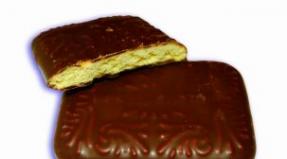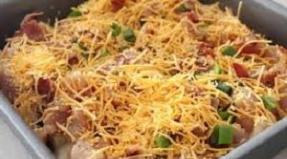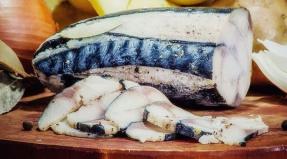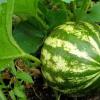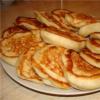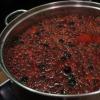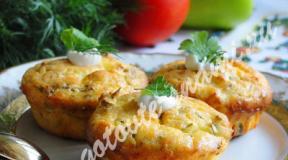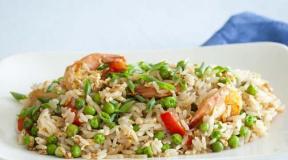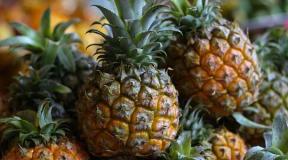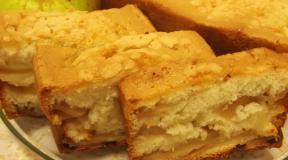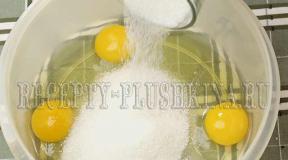How to make mastic for cakes step by step recipe. Step-by-step recipe for making cake mastic
Modern cooking cannot be imagined without mastic confectionery. not only attracts the eye, but is also a very tasty product. Nevertheless, four centuries ago, people did not even suspect what cake mastic was. In the 16th century, this sweet became popular among pastry chefs in Western Europe. However, at that time, purely candy was made from it.
What is mastic for cake and pastries, the world learned closer to the 20th century. Today, this decoration is used in the preparation of sweets even more often than icing.
What is mastic?
For cake and other types of sweets, this substance acts as a coating and decoration, since it has a pasty, elastic consistency. Thanks to this, confectioners can easily shape their products into any shape. It is important to understand that only thick cakes (based on several layers of cake layers) can withstand the weight of the mastic.
In terms of composition, this confectionery product can be varied. The only ingredient that must be included in the mastic is powdered sugar. The rest of the composition may include starch, protein, gelatin, marzipan, marshmallow, and many other products. Dyes and flavors are often used in wide production.
There are a lot of recipes for making mastic, so each person can look for a suitable option for themselves to make it with their own hands. You don't need to go through a special master class for this. A mastic cake is prepared at home in a matter of hours.
It should also be noted that this decoration itself is very high in calories. There are about 393 cal per 100 grams of product.
A kind of mastic
Today, powdered sugar decorations can be found in any bakery and even grocery store. It is also quite possible to cook them at home. However, before that, it is important to distinguish between the types of mastic mass: gelatinous, honey, marzipan, milk, flower. A separate variation of the product is the industrial type.
The gelatinous mass in some recipes is called pastilage. Such mastic hardens very quickly, remaining elastic and firm. This effect is achieved thanks to the basis of the decoration - gelatin. This option is ideal for cutting flowers and small details.
The next type of mastic is made not from sugar, but from honey. Thanks to this, the mass is very soft, but does not crumble after drying.

Milk mastic is considered one of the most popular types of cake decorations. With the prepared mass, you can not only cover the entire top cake, but also mold small simple figures from it. The main ingredient is
Marzipan mastic is considered the softest in consistency. It should be rolled out in a thin layer, which will eventually cover the cake. On the other hand, it is not suitable for sculpting figures and even inscriptions.
The best option for complex mastic products is the floral look. From such a mass, you can make both a large rosebud and small snowdrops. In any case, it will not lose its appearance and shape.
Industrial mastic is widely used for cakes. It is impossible to cook it at home. This mastic is suitable for wrapping the cake and for decorating it. The appearance is often more beautiful and brighter than when made at home, since various industrial dyes and other additives are used in the industry.
The basics of making mastic
In order to make a sugar mass, you need to take care of the presence of some tools that should always be at hand. First, there is a rolling pin and a wooden board. In fact, any flat and dry surface, including a table, is suitable for manufacturing. Also, you should have cling film, a round sharp knife, a ruler, molds and various accessories (ribbons, beads, etc.) at hand.
Before cooking, it is important to understand what mastic is. For a cake, this is a decoration, but in no way its base or layer.

Most often, mastic is made from powdered sugar, water, lemon juice and gelatin, but there are options. Many confectioners advise adding oil and glycerin to the mass so that the mixture does not dry out very quickly.
All ingredients are added to a deep enamel pot or bowl. Stir for about 15 minutes until smooth. It is allowed to sprinkle the finished mass with starch or powder to prevent sticking to a wooden surface and hands. The rest of the mastic should be stored in cling film so that it does not dry out.
To proceed only after the top layer of the cream has completely hardened. It is recommended that the confection be covered with dry biscuit or marzipan mass.
Homemade mastic recipe
For the cake, it is customary to use gelatinous, marshmallow or milk mass. The first option is the most budgetary, but the other two are the most airy and delicious.
1. Homemade gelatin cake mastic, in addition to the protein "fixer" itself (2 teaspoons), consists of the following ingredients: 450 g of powdered sugar and 50 ml of water.
You will need two deep enamel bowls for cooking. The first mixes cold water and gelatin powder. In the second, sift the powder. After the mass has swollen in the first bowl, it must be held for several minutes in a water bath. The next step is to add powder to the mixture. The finished mass is rolled into a ball and wrapped in cling film.
2. Marshmallow mastic is suitable for sculpting simple shapes and pouring the top cake. In consistency, it should be soft and stringy. The ingredients include: 200 g of regular marshmallow, 2 tbsp. spoons of water, 100 g of icing sugar. Food coloring can be added if desired. In this recipe, marshmallows play the role of gelatin.

For accelerated preparation of this type of mastic, you will need a microwave oven. The marshmallow is poured over with water and pounded with a fork. Then the mass is placed in the microwave for 1 minute. After the marshmallow has finally melted, sifted icing sugar is added to it. As soon as the mass resembles plasticine in consistency, the mastic will be ready for modeling. However, pastry chefs advise home cooks not to rush into modeling and leave the mixture in the freezer for half an hour.
3. Milk mastic is very popular with most housewives because of its richness and sweetness. In consistency, it will be similar to marshmallow. The ingredients include: 200 g of condensed milk, 250 g of powdered sugar, 2 teaspoons of lemon juice. You can also add 5 ml of brandy to the mastic.
The preparation of the condensed mass is reduced to mixing all the ingredients until a homogeneous viscous consistency.
Processing and storage of mastic
At home, you can easily color the sweet mass. To do this, you need the right color. It should only be added at the stage of the initial mixing of the ingredients. If you try to do this procedure after preparing the mastic, the color will be uneven.
You can also use spinach, beetroot or carrot juice to add a light shade to the mass.
from mastic
The most popular today are confectionery products with the addition of fresh apples, citrus fruits, berries and other plant products. Fruit cakes made from mastic for a year for a child are also very popular. This option kills two birds with one stone - both tasty and colorful, which is what children need.
The dough contains: 150 g of shortbread cookies, 125 g of butter, 60 g of milk chocolate.

For the cream and the layer you will need: 450 g of fat-free yogurt, 200 ml of cream, 20 g of vanilla and cappuccino powder, 3 tbsp. tablespoons of sugar, 2 tbsp. tablespoons of gelatin. added to taste. You can use jelly instead.
Fruit mastic cake step by step:
1. Cookies are crushed to powder, mixed with butter and melted chocolate.
2. The form is abundantly lubricated. You can not sprinkle its edges with flour or powder.
3. The resulting mass of cookies is placed in a mold, then in the refrigerator for 30 minutes.
4. To prepare the interlayer, mix all appropriate ingredients. The liquid mass is placed in the refrigerator.
5. The cookie dough is rolled onto the cakes. Bake only over low heat.
6. Fruits and cream are laid on ready-made cakes.
Milk paste is best for this cake. Figures can be made in advance.
Mastic sponge cakes
DIY mastic biscuit cakes can be made in just 1 hour. To do this, you need the following ingredients: 4 eggs, 2 tbsp each. tablespoons of sour cream, sugar, flour, baking powder and cocoa powder, 1 tbsp. spoons of poppy seeds, raisins and chopped nuts. The cream contains only 400 g of butter and 800 g of condensed milk.

Sponge cake from mastic step by step:
1. To prepare the cakes, mix all the ingredients for the dough.
2. The resulting mass is poured into a mold. Bake at 180 degrees.
3. Soak the cakes with cream and butter in a 2 to 1 ratio.
4. The edges of the cake can be garnished with chopped nuts.
For biscuit products, marshmallow mastic is better. It is not recommended to place figurines on ground nuts or raisins.
Puff pastry cakes
To prepare such confectionery products, it will not be superfluous to go through the next master class. A mastic cake based on puff cakes requires products such as 650 g of flour, 400 g of butter, 2 eggs, 150 ml of water, 1 tbsp each. a spoonful of brandy and vinegar, salt. The main ingredients of the cream are milk (750 ml), yolk (4 pcs.), Sugar (200 g) and butter (120 g). You can also add 50 g of flour and 1 tbsp. a spoonful of vanilla.

To begin with, to make puff pastry cakes from mastic with your own hands, you should mix vinegar, brandy and water in a glass. Then do the same with eggs and salt in a small bowl. After that, both masses are mixed until homogeneous. Finally, butter and flour are added to the mixture. The finished dough is divided into 12 parts (future cakes). At the same time, custard is made in the oven at 220 degrees.
The cake should be well sandwiched. Ordinary gelatinous mastic is suitable for decoration.
If the mastic does not roll out well, it can be slightly warmed up.
It is best to install the figurines on a layer of butter cream or marzipan.
Unused mastic in film should not be stored for more than 2 months.
Amazing color, isn't it? I just love it! But this is my own recipe for making sugar mastic! For all my modesty, I can say that I am proud of him, and my clients really like him.
In this article I will talk about how to make mastic with your own hands. The secret is in the ingredients.
Another plus of it is that it is very flexible and can be rolled out to a very thin cake and in this state it can be wrapped around the cake. I do not like to make thick layers and therefore this is a huge plus for me.
Here I will try to detail the recipe for making mastic from powdered sugar.
In those days, when I just started decorating, I only used it on all my cakes. But over time, my business began to grow and I switched to shop mastic.
Making cake mastic at home can get very tedious if you have to make a large number of servings every week. So I found that I couldn't make such a huge amount of mastic often. And yet I make it with this recipe for some clients and also when doing something for my family. I hope you enjoy my delicious mastic recipe.
Sugar mastic cake recipe
Cooking time: 35 minutes
Cooking time: 3 minutes
Total: 38 minutes
Total weight: from 900 grams to 1 kg
What is necessary:
- mixer with dough attachment
- small mixing bowls
plastic bag - plastic food storage containers
- 1/4 cup fresh whipped cream
- one and a half tablespoon of gelatin
- half a teaspoon of protein powder
- 1/2 teaspoon light corn syrup
- 3 tablespoons of butter
- one and a half tablespoon of glycerin
- half a tablespoon of salt
- 2 tablespoons vanilla or vanilla sugar
- approximately 750-850 grams of caster sugar
Directions
- Prepare all the ingredients in advance.
- Put about 750 grams of caster sugar in a bowl, add protein powder and salt, stir the whole thing.
- Place the cream in another bowl and sprinkle with gelatin on top. Leave it on for 2 minutes.
- Then place the bowl in the microwave on maximum power for 30 seconds, until all the gelatin has dissolved.
- It is very important that all the gelatin is dispersed, otherwise lumps will be visible in the finished mastic.
- Pour the corn syrup into a bowl, stirring vigorously.
- Add butter. It is important that it lie down for a while at room temperature.
- The hot mass should melt the butter, but if it has not melted to the end, place the bowl in the microwave for another 10 seconds.
- It is not necessary for the oil to completely dissolve. If there are small pieces left, then it's okay.
- At this stage, the mixture should not be hot or cold, but just warm. The hot mass will melt the powdered sugar and then it will have to be added in excess. Cold will cause lumps of gelatin to appear.
- Now add glycerin, vanilla sugar and stir.
- If you already know what color of mastic you need, then you can add food coloring right now.
- Make a notch in the center of the icing sugar bowl and pour in the mixture you prepared earlier.
- Begin mixing from the center outward.
- Make sure to mix the icing sugar well with the mixture before adding more.
- As soon as the mass takes on a doughy consistency, transfer it to a flat surface and knead. If suddenly the dough seems dry to you, add a tablespoon of butter to it and continue kneading.
- I advise you not to add additional powdered sugar at this stage, even if the mixture is a little sticky (it shouldn't be too sticky, though).
- The finished mastic in its consistency should resemble dough and at the same time not be too dry.
- Divide the mastic into 2-4 pieces, place each in a bag and tie well.
- Leave the dough to rise overnight in the refrigerator.

Notes
When you decide to use the mastic, remove it from the refrigerator beforehand and wait for it to warm to room temperature. After heating, stir it well to keep it soft but not sticky. You can now add more caster sugar if required.
How I came up with this recipe
When you live in a place where the weather is constantly very hot and damp in summer, it becomes simply impossible to decorate the cake with a large amount of cream. Especially for me, because I used butter cream all the time.
Therefore, I needed to find a way that would make the sweet mastic as good as this cream and so that people could eat it and not throw it away, which is what they do with store-bought mastic.
I started experimenting with the usual recipe for sugar mastic, which is made with the addition of water. At first I just replaced the water with milk, then instead of milk I started using cream, and so on. I know there are a couple of recipes that use cream and milk, but because of the hot weather and humidity in the place where I live, they all did not fit, and it was almost impossible to roll such mastic normally, especially in the summer.
It took a while, and by eliminating and adding ingredients, I finally came up with this recipe that was perfect for use at any time of the year.
Maybe to some people my recipe will seem less sweet, but I would not say so - after all, this is practically the same sugar paste, but it uses less powdered sugar compared to the usual recipe. If you read the recipe again, you will see that it uses a fairly large amount of oil, and with it everything is much tastier. Protein powder is needed not only to make the mastic strong, but also for the taste. I have had clients who say they find my sugar paste tastier than what they have tried before. But everyone has their own taste, so judge for yourself.
Storage conditions:
Conventional mastic can be stored for months under appropriate conditions. A large amount of powdered sugar acts as a preservative. This mastic at room temperature can be stored for about a month on the shelf. I usually divide it into 1kg portions and store it in bags.
I will make a reservation that for safety reasons, if you are not going to use the mastic for a long time, it is better to store it in the refrigerator, and not on the shelf, especially in the summer months.
It can be stored in the refrigerator for up to 3 months. If you need to keep it even longer, then put it in the freezer. Just pull it out a few hours before use so it can thaw and warm to room temperature.
Hope you enjoy this recipe.
Sugar Sugar Basics for Decorating Cakes
Mastic can be bought at any specialty candy store. Alternatively, you can make regular sugar mastic at home, or use marshmallows for this.

We paint sugar mastic
To paint the mastic, you need concentrated helium food colors. Store-bought water-based dyes will not work because they will make the mastic too damp. Scoop up a small amount of the dye with a knife and rub the mastic with it until it is evenly colored. Repeat if a darker shade is required.
Tip: If you are not sure which colors to mix, you can use the chart below as a practical guide. The topmost value is blue, the next is magenta, then yellow and black. All values are in percentages. For example, to get a light gray color, you need to use a small amount of black dye.

To get green, like the bottom row, use a lot of yellow and a little bit of blue and black. All colors are only approximate because each monitor has a different color rendering, but it's still a good starting point. Note that you can always add more paint, so start with a little, especially when using dark colors.
If you are looking for black or bright red, I suggest buying pre-painted mastic from a specialty store, otherwise you may end up with pink or gray. Excess mastic can be wrapped in a bag and stored in a closet or freezer.
Place a sheet of parchment paper on the table so it doesn't get dirty and you can easily move your sugar mastic figurines without destroying them. Find a picture of what you want to do and start creating!

I have boys, so sugar mastic flowers on my cakes do not appear so often. I made the wings, eyes, nostrils and horns in advance so that they could harden. The day before serving, I made a cake, covered it with cream and then sugar paste.

This cake is called "Batman - City of Gotham". All of its elements, including the windows and gutter, were made several weeks before the actual cake was made. It is covered with colored cream with the addition of mastic elements. I also note that the figures from the series were purchased from the store.

In the cake called Thomas the Tank Engine, the face and number 3 are made of mastic, and the rest is cream and licorice.

And this is a huge Black Forest cake with chocolate ganache, topped with mastic. The stars and mask are also made from sugar paste.
A natural question arises: how much mastic will be needed to cover the cake? Everything is very simple.
Mastic (sugar paste with glycerin)

Mastic is a versatile product and there are several ways to prepare it. You can also just go to the store and buy it there. Store mastic is expensive and in most cases it is much better to learn how to cook it at home. Marshmallow mastic is popular, but there are other types as well, such as marzipan mastic and sugar mastic. Therefore, a correctly chosen recipe can greatly simplify the process of decorating confectionery. The mastic is rolled out and wrapped around the cake to give it a subtle and attractive look. You can make figurines from it, you can paint it with food coloring, as well as from a spray bottle. This uncomplicated recipe makes amazing mastic, and it will always be my favorite.
Ingredients:
- 1 tablespoon of gelatin
- a quarter cup of cold water
- half a cup of liquid glucose (or light corn syrup)
- 1 tablespoon food grade glycerin
- 1 teaspoon vanilla extract or vanilla sugar
- 1 tablespoon margarine or pastry fat
- 750 g caster sugar, sifted
Directions:
1. Place the gelatin in a deep bowl and cover with water. Leave it on for 2 minutes to soften the gelatin.

2. Place it in the microwave for about 1 minute at maximum power, then remove and stir until the lumps disappear from the gelatin and the mixture becomes clear.

3. In a large bowl, place half the sifted caster sugar, make a depression in the center, and pour the gelatin there.

4. Using a wooden spoon, stir well until very sticky.

5. Add more icing sugar and mix well. Remove the spoon when it becomes difficult to stir and continue kneading with your hands. As a result, the dough should stop sticking to your hands, but at the same time be plastic.

6. Spread the margarine on your hands and continue to knead the mastic thoroughly until it becomes soft. To dye it, apply liquid dye to a toothpick and stick it in several places into the dough. Then knead again well until the color is evenly distributed. If marble coloring is required, simply stop kneading until the dough is solid.

7. Then wrap the mastic with plastic wrap and store in an airtight container to prevent drying out. Sugar mastic can be stored for more than a week and if suddenly it dries out, you can always place it in the microwave for 30 seconds or a little more and stir to soften it again.
How to make sugar mastic at home
Sugar mastic is used for wrapping cakes covered with cream or ganache and smoothing their surface. With this recipe, you will have a strong yet flexible dough that you can use to wrap the cake around without any problems.
Home-made sugar mastic is much tastier than store-bought sugar, and is also much cheaper.
Now imagine a sugar paste that is convenient to work with and tastes great at the same time. This step-by-step recipe will show you how easy it is to make one.

Sugar mastic recipe (1.2 kg)
Ingredients:
- 7 cups confectionery sugar or powdered
- 1/3 cup and 2 tablespoons (100 g) confectionery fat
- 1 tablespoon dry gelatin
- 2 tablespoons (30 ml) water
- 1/3 cup (106 g) light corn syrup or glucose syrup
- 1 tablespoon (15 ml) food grade glycerin
- three quarters cup (100 g) white chocolate for baking
- 1/2 teaspoon (2.5 ml) finely ground salt
- 1 teaspoon lemon juice or a couple drops of vanilla extract
- food coloring (optional)
- margarine
The note:
While chocolate is not required for baking, I would highly recommend using it. Chocolate increases the plasticity of the mastic sugar and lengthens the time you can trim it on the cake before it hardens.
Directions:
1. Prepare all required components.

2. Sift the icing sugar into a large bowl and add two glasses of water (500 ml) for later use.
Microwave baking fat or margarine on full power for 40 seconds until melted.
3. Pour the gelatin into the water and place in the microwave at full power for 15 seconds to melt. Do not let the mixture boil or the sugar mastic will not be strong.
Toss the melted margarine with the gelatin.

4. Stir the glucose (corn) syrup, glycerin, salt and chocolate into the melted gelatinous mass.

5. Place the mixture in the microwave for 30 seconds. If you have added confectionery chocolate, it will take an additional 20 seconds. Stir to remove any lumps.
6. Add lemon juice, vanilla sugar and food coloring. You can also paint the mastic at the very end. Dip a toothpick in helium food coloring and use it to paint a little of the mastic, or use an eyedropper for this. Mix the dyes as needed to achieve the color you want.

7. Make a hole in the powdered sugar and pour the gelatin into it.

8. Stir the gelatin mixture into the powdered sugar using a wooden spoon or mixer with dough attachments.
Stir until most of the powder combines with the gelatin to form a gummy paste. Be careful with the mixer as it can burn if the paste is too thick.

9. Pour some of the icing sugar prepared earlier onto your work surface.

10. Grease a spatula with confectionery fat (margarine) and use it to place the mastic on the table.
11. Now grease your hands with margarine and knead the mixture. Continue adding the powder until the dough is smooth.
If sugar mastic starts to stick to your hands, grease your hands with confectionery fat again and add more powder.

12. Sugar mastic should turn out to be strong, but at the same time remain a little damp, since after a day it will become harder and drier. If you need to use it immediately, add more powder to keep it dry and firm.

13. Grease sugar mastic on top with margarine and wrap in plastic wrap. Wrap it in another plastic wrap on top and leave to rise overnight.
If the mastic becomes very hard the next day, microwave it at full power and check every 10 seconds to see how well it rolls out.

14. Add food coloring if the color is too light or if you did not color the mastic in the previous steps. 
15. Before rolling out the mastic, it is necessary to knead it well.

- Sugar mastic is stored for two months at room temperature, in the refrigerator for four months and six months in the freezer. Allow it to warm to room temperature before use.
- It is preferable to use helium food colors as they do not affect the hardness of the mastic. Liquid food coloring will soften it, so add an extra dose of powdered sugar in this case.
- If the sugar mastic is very soft and sticky, add the powdered sugar to it.
- If the mastic is dry, cracks and crumbles, add a few teaspoons of melted margarine to it. You can also add glycerin or a few drops of chilled boiled water to soften the mastic and become more elastic.
- Always store mastic sugar in cling film, as it dries very quickly. Before working with it, be sure to grease the surface with margarine.
Classic sugar mastic

Using this recipe, I made my first sugar mastic and have been using it ever since. I found it in one of my favorite cooking books. cakes... The glucose and glycerin used in the recipe can be found in specialty stores and pharmacies.
Ingredients:
- a tablespoon of gelatin
- a quarter cup of water
- half a cup of glucose
- a tablespoon of glycerin
- 2 tablespoons confectionery fat
- 8 cups caster sugar
- teaspoon of lemon, orange, or almond extract (optional)
You can also use half a cup of corn syrup. In this case, you will need 3 tablespoons of water.
Pour water into a metal bowl or glass measuring cup. Sprinkle the gelatin on top and let sit for 5 minutes or so, until the gelatin swells. Place a bowl over boiling water to melt the gelatin. Be careful not to overheat it or it will deteriorate. Gelatin can also be melted in a glass measuring cup by placing it in the microwave for a couple of seconds.
Mix glucose and glycerin. Pour the confectionery fat into the mixture until it dissolves in it. At this point, you can add food coloring or flavoring if desired.
Pour the icing sugar into a large bowl and make a depression in the center. Pour the gelatin mixture into it and stir with a wooden spoon greased with confectionery fat. Stir until you get a homogeneous mass.
Finally, knead the dough with your hands. Then transfer the mastic to a work surface that is also greased. Knead the dough to remove lumps and smooth. Wrap the sugar paste in plastic wrap and store at room temperature.
One recipe for a dish can be passed down from generation to generation ad infinitum. For example, cakes and how to decorate them. The hostesses strive not only to amaze guests with the excellent taste of baked goods, but also want to give them an aesthetic look.
They are no longer interested in simply sprinkling cakes with chocolate or coconut, or making inscriptions with icing. At home, they manage to prepare a decoration - cake mastic. Thanks to the plasticity of the pasta, the hostesses manage to make the dessert a true work of culinary art.
Mastic is a paste used for modeling confectionery. It is easy to use, as from plasticine you can mold various figures, flowers, inscriptions from it. A variety of color shades allow you to turn an ordinary dessert into a fabulous sight at home.
Step by step video recipe
Not a single person will refuse such a cake. The result of working with mastic can come as a surprise even for the hostess herself, because it is not so easy to restrain the creative impulse and imagination.
There are three types of mastic: sugar, Mexican and floral. The first one is the most popular among pastry chefs; it is covered with cakes, cakes and gingerbread. Sugar mastic is also used to form the figurines that decorate the cakes.
Another type is flower mastic. As the name implies, it is used for special decorations. The consistency of the paste is perfect for sculpting thin petals.
The plasticity of such mastic is due to the content of a special thickener in it, in addition, the figured ornaments from it dry quickly and perfectly keep the originally created shape.
Mexican mastic is used to sculpt small jewelry. It contains quite a bit of thickener, which allows you to slowly create any subtle details.
Homemade cake mastic can be either white or any other color. If you want to save money, stick with the first option, and only then add food coloring and get a multi-colored paste.
It is important not to overdo it with the amount of dyes, otherwise the mastic will become unsuitable for further use, because it will tear and crumble when it hardens.
Homemade mastic recipe for cake modeling
The basic rules for making pasta for decorating a cake are most likely unknown to you. Therefore, I want to dwell on them in more detail:
- To prevent the mastic from tearing, use powdered sugar in your work. When grinding sugar in a coffee grinder, you need to sift the resulting product through a very fine sieve.
- When mixing the paste, pay attention to its consistency. Do not exaggerate, a large amount of dye or powdered sugar will lead to rupture of the mastic.
- If the mastic sticks to your hands during mixing, give it time to rest in a cold place.
- The cake decorating paste lasts about four months in the freezer.
And now we will learn how to form some types of mastics at home. Difficulties in the process of work should not arise. If you read each recipe carefully, you will get the job done very quickly.
Sugar paste
It is used for sculpting flower buds, leaves, figurines. Ingredients:
Cooking steps:
- Pour gelatin with cool water and let it swell for a quarter of an hour.
- Place the dishes in a water bath and wait for the gelatin to completely dissolve.
- Add lemon juice with vanilla, then add powdered sugar.
When kneading the paste, be careful not to get too tight. Otherwise, you will get a problem in the form of constant crumbling of the paste.
Homemade Milk Flavored Mastic Recipe
Homemade mastic has a pleasant smell of condensed milk; it is often used to cover dessert flour products.
Take:
170 g condensed milk; 160 g icing sugar; 160 g of powdered milk (it is allowed to replace with dry infant formula); a teaspoon of fresh lemon juice
Combine loose ingredients in a bowl, add lemon juice and condensed milk. Stir until you get the mass ready to use.

Condensed milk mastic recipe
This homemade mastic is great for sculpting small figures and wrapping cakes.
You need products:
160 g each milk powder and powdered sugar; 10 ml fresh lemon and 200 g condensed milk
The preparation of the pasta comes down to mixing all the components in one bowl. First, pour milk powder and powder into a bowl, followed by lemon juice and condensed milk. Stir until the mass is elastic enough.
Honey mastic recipe
Unlike sugar mastic, honey mastic is more plastic. You can easily sculpt small details of decoration from it and make a covering of the whole cake (see photo).
To make pasta you will need:
0.9 kg of powdered sugar; 3 tbsp. spoons of water; 175 g honey and 15 g gelatin
- First, soak the gelatin in cold water for 15 minutes.
- Then add honey and place the mixture in a water bath.
- As soon as it (mixture) becomes liquid, remove it from heat and pour in 800 g of powdered sugar.
- Stir in the paste, gradually adding the rest of the powder.
As a result, you have a plastic mass that does not stick to your hands. The recipe for checking the readiness of the mastic: press your finger on its surface and make sure that the trail does not disappear after a few seconds.
Chocolate mastic recipe for decorating a cake
The preparation of the mastic is based on the use of dark dark chocolate. But there are times when a bar of milk or white chocolate is taken instead.
So, attention, the necessary ingredients:
40 ml heavy cream; 90 g marshmallows; 2 tablespoons of powdered sugar; one spoonful of butter and 100 g of dark chocolate
- Another recipe for chocolate mastic involves mixing a hundred-gram bar of dark chocolate and a tablespoon of honey.
- The mass is kneaded for several minutes and then checked for readiness.
- To do this, flatten a small ball between your fingers.
- If the edges remain intact and not torn, then the mastic for the cake is considered ready to use.
Marshmallow mastic recipe
You need to purchase:
200 g marshmallows of one shade and half a kilo of powdered sugar
Pour one tablespoon of butter over the candies and microwave. Once the marshmallows have melted, remove the mixture and mix well. Gradually add the icing sugar, kneading the mastic until smooth and plastic.
Gelatin mastic
This recipe will come in handy if you need to mold any large durable jewelry elements, for example, a basket handle. This mastic is too tough to eat, but the advantage is that it retains its shape well.
Pastillage, the so-called gelatinous paste, is prepared from:
120 g starch; 240 g icing sugar; 60 ml of cold water; a tablespoon with a slide of gelatin; 5 ml fresh lemon and 2 teaspoons of honey
At home, the decoration is prepared as follows:
- Pour gelatin with cool water and leave to swell for half an hour.
- Melt the mixture over a fire until liquid and add lemon juice and honey.
- Mix the icing sugar and starch and add to the liquid mixture. Knead the mass until plastic.
- Line the mold with foil and fill with paste.
- Send the pastilage to the refrigerator and wait a couple of hours until it hardens.
If the mass does not obey you before sculpting, hold it in the microwave for a few seconds.
Flower mastic recipe
By learning how to work with flower mastic, you can create delicate flower buds. They will look so much like real flowers that no one among the guests will even realize that you had a hand in this.
To knead a plastic paste at home, you will need:
50 ml of water; 2 dessert spoons of lemon juice; 550 g icing sugar; 10 g gelatin; 10 g carboxymethyl cellulose; 20 g shortening (cooking oil) 4 tbsp. tablespoons of corn syrup; 2 egg whites
Optionally add icing bleach, this will make your mastic super snow white, like in the photo.
Cooking in stages:
- Pour gelatin with water and let stand for a few minutes.
- Mix the powdered sugar with bleach and cellulose.
- Melt the gelatin on the stove, add the cooking oil and corn syrup.
- Pour the mixture of liquid components into the icing sugar and, using a food processor, turned on at medium speed, mix thoroughly.
- Turn up the RPM and add the egg whites and lemon juice to the mixture. As soon as the mixture turns white and becomes homogeneous, turn off the machine and remove the mastic from the bowl.
- Before use, it must be wrapped in foil and kept for 24 hours at room temperature.
The mastic has a limited shelf life of 3 months, provided it is kept in a refrigerator. In the freezer, the pasta can lie longer - up to six months.

How to make a delicious cake and decorate it with mastic
If you prudently purchase ready-made biscuit cakes, then it will not take you so much time to prepare a treat.
You will need:
250 g of chocolate paste; 3 large spoons of semolina; 400 ml of milk; a teaspoon of lemon zest; 250 g white sugar; 250 g butter; any fruit
So let's get started:
- Cook porridge from semolina and milk, cool naturally.
- Whisk in soft butter with granulated sugar, add lemon zest.
- By combining the porridge with the creamy mixture, the cream can be considered ready to use.
- Cut bananas, kiwi or other soft-fleshed fruits into wedges or slices.
We collect the cake:
- Put a sponge cake on a dish and grease it liberally with cream.
- Make another layer of the banana (as in the photo) and cover with a biscuit.
- Alternate layers until all ingredients are gone.
- Do not grease the top layer with cream. Carefully remove the cream that has spilled on the sides with a spoon.
- Spread the chocolate paste over the entire surface of the cake immediately. First you need to melt it slightly by placing it in the microwave.
- Apply the paste with a wide-bladed knife, smooth the surface at the end and let it freeze in the refrigerator.
- Now dip the knife in hot water and make the surface perfectly smooth. The cake is now completely ready to be coated with mastic.
When choosing a cake for a children's party, choose the appropriate decorations. Boys will love the dessert with colorful cars, girls will be delighted with the cake with flowers sculpted from mastic.
Now that you already know how mastic for a beautiful decoration is prepared with your own hands, I hope it will not be difficult for you to put your knowledge into practice.
Culinary mastic- Excellent decorative and edible material for cakes and simple pies and muffins. Butter products, decorated with mastic, turn into works of art, which are a pity!
There are many recipes for mastics, but the base is always the same - it is powdered sugar. As a binder, gelatin, glucose.
How to make mastic yourself?
So: there are two main options for mastic - milk and gelatin. But there are also less time-consuming recipes, which we will give below.
Let's start with
1. MILK MASTICS. It is easier to prepare and easier to use. Mix equal amounts of milk powder and powdered sugar, then add sweet condensed milk (1: 1: 1). We knead the mass until the consistency of soft plasticine. You can slightly tint the mastic with food colors.
Now, remembering the lessons of labor at school, we sculpt flowers, leaves, berries, bunnies, ducks, etc. from it. Sculpted jewelry must be dried. You can roll the mastic into a layer, 1-2 mm thick or thicker, and cut out the figures with a recess, or with a knife. It is better to roll out on cling film, and sprinkle the mastic with powdered sugar.
If the mastic sticks to your hands during sculpting, you need to add powdered sugar, if it dries up, wrap it in parchment or film. The only drawback of milk paste is its yellowish color, so if you need to make flowers in white, or pale pink and blue, I use gelatinous paste.
2. GOLDEN MASTIC more capricious in cooking, you need to feel it, as the confectioners say. We take gelatin - 10 g, powdered sugar 900 g, water 10 tablespoons.
Gelatin is soaked for 40-60 minutes, heated in a water bath, and then cooled down. In still liquid, but already cool gelatin, GRADUALLY add powdered sugar, kneading thoroughly. Delicate flowers, such as tulips, are especially good from this mastic. To do this, roll out the tinted mastic into a thin layer, sprinkling with powdered sugar. Then, tearing off a small piece, we give the mastic the shape of a petal using an ordinary teaspoon (you will need several spoons). Having glued the spoon with mastic on the inside, remove the excess. The petal is ready - let it dry up, and in the meantime we take on the next
Already on the cake we combine the petals into buds, and cut the leaves from the same mastic, tint them green.
3. Sugar mastic from marshmallows.
- marshmallow 50 g
- icing sugar about 200 g
Put the sweets on a plate, add a tablespoon of water and put them in the microwave for 20-30 seconds. They will melt.
We take out, knead with a fork, add dye and powdered sugar.
First I kneaded with a fork, then with my hands. You need a lot of powdered sugar, but don't overdo it! The mastic should stick to your hands a little. If there is too much powder, the mastic will harden quickly and stick poorly.
4. Marshmallow mastic
For cooking you will need:
- Powdered sugar - how much the mass will absorb;
- Marshmallow (chewing) - 200 gr.;
- Water - 2 tablespoons
- Food coloring to change the color of the mastic.
First, marshmallows are placed in a deep plate, water is added (to add acidity to the mass, it can be replaced with lemon juice), all this is placed in the microwave for 40 seconds. According to the recipe, mastic for the cake turns out to be delicate and plastic. When the marshmallow has melted a little, powder is added, which is sieved in advance.
It must be added until the mass looks like plasticine, and this should be done gradually, so as not to fill up the excess, otherwise it will be impossible to work with the mastic - it will become rough. As soon as the mass is obtained, it must be wrapped in cling film and put in the freezer for 30-40 minutes, and then you can start working with it.
Experienced pastry chefs know that each type of mastic is suitable for a specific purpose. But housewives, carried away by art, find different ways of making cake mastic at home. More often than not, the main criteria are inexpensive and affordable products, ease of preparation, versatility and the ability to paint the mass after cooking.
Secrets of working with mastic!
1. Sugar for mastic should be very finely ground. If sugar crystals are found in it, then the layer will break during rolling.
2. Depending on the type of sweets, powdered sugar may be required much more than indicated in the recipe, so it needs to be stocked up in large quantities in advance.
3. The mastic coating should not be applied to a damp base - to soaked cakes, to sour cream, etc. Mastic dissolves quickly from moisture.
4. As a layer between the cake and the mastic, you can use butter cream (already frozen in the refrigerator), ganache or marzipan.
5. To glue the jewelry onto the mastic coating, the bonding area should be slightly moistened with water. To glue different parts of mastic figures, you can use protein or protein with a small addition of powdered sugar.
6. Marshmallows are most often sold not in one color. It is best to buy white marshmallows. Colored marshmallows can be divided by color - put the white halves in one dish and the pink ones in another.
7. Figures from marshmallows can be painted on top with food coloring or dye added during the preparation of mastic.
Attention!
If the room is very humid, then the cake covered with mastic, after being removed from the refrigerator, may become covered with condensed moisture. In this case, it is advisable to serve it directly from the refrigerator to the table. If it still takes time before serving, then the moisture from the mastic can be gently blotted with a napkin. Or place the cake under the fan.
If the mastic has cooled down and began to roll out poorly, then it can be slightly warmed up in a microwave oven or in a hot oven. It will become plastic again.
You can store unused mastic in the refrigerator (1 ~ 2 weeks) or in the freezer (1 ~ 2 months), after wrapping it in plastic wrap or putting it in a container.
The finished dried mastic figurines should be stored in a tightly closed box in a dry place. Such figures are stored for several months!
The mastic coating should not be applied to a damp base - to soaked cakes, to sour cream, etc. Mastic dissolves quickly from moisture.
As a layer between the cake and the mastic, you can use butter cream (already frozen in the refrigerator), ganache or marzipan.
I think that if the top cake is not lubricated with anything, then the mastic will not lie exactly on the cake. Cream or marzipan allows you to smooth out all the irregularities on the surface of the cake. The surface of the cake for the mastic should be perfectly flat.
- an ideal material for wrapping the entire surface of the cake, including the sides, in one layer. It also makes beautiful figurines, leaves, flowers, inscriptions. The material requires a special approach. It dries quickly, for work you will need some tools - "irons", an even rolling pin.
Ingredients:
- Gelatin - 5 teaspoons;
- 3 tablespoons of water;
- Fine powdered sugar - 600-700 grams;
- Honey (corn syrup,) - 125 ml.
Cooking process:
- Soak gelatin in water, let it brew for at least half an hour.
- When it swells, fill it with liquid honey, mix well and place in a water bath.
- Heat for about 5-10 minutes, stirring regularly, until all the gelatin is dissolved.
- Pour the warm mixture into the powdered sugar in a deep bowl. It is advisable to make a small depression in the powder and pour the honey mixture in a thin stream.
- Knead the mixture first in a bowl and then on a board sprinkled with powder.
- You should get a soft, plastic, slightly sticky mass.
- Place a ball of sugar mass in a plastic bag and let it rest for 30 minutes. This is enough time to wrap the cake with the material. For figures, flowers, the paste should harden slightly within 24 hours.
- From the finished mastic, you need to make a thin uniform layer if you want to wrap the cake completely, or sculpt figures.
Sugar and milk paste

The housewives will really like this version of the mass for wrapping the cake - the mass turns out to be very pliable, a little softer than ordinary mastic, it is better cut with a knife. The use of powdered milk makes it possible to give the finished mastic a white color without dyes.
Ingredients:
- Powdered sugar - 160 grams;
- Powdered milk (or cream) - 160 grams;
- Condensed milk - 200 grams;
- Lemon juice - 3 tablespoons;
- Flavor - vanilla, cognac or rum essence - 5 milliliters.
Cooking process:
- Sift the icing sugar twice through the finest sieve.
- Mix it with milk powder right on the work surface.
- Make a well in the mixture and pour over the condensed milk.
- Knead the dough, add lemon juice and flavoring at the end.
- If the mass is not firm enough, add a little milk powder. If it is liquid, a little boiled water.
- Knead the mixture for at least 15 minutes by hand so that there are no lumps. Roll into a ball and wrap in foil for half an hour. Roll the mastic in powdered sugar or milk powder into a thin layer, then wrap your delicious homemade cake.
Mastic on infant formula

If you have unused dry infant formula, you can also make delicious mastic from it at home. To taste, such a coating for baking resembles milk toffee, it is very convenient to work: it rolls out perfectly, practically does not break and does not dry out for a long time. The color of the finished mastic is soft cream.
Ingredients:
- Infant formula - 150 grams;
- Lemon juice - 60 milliliters;
- Condensed milk - 100 grams;
- Powdered sugar - 150 grams.
Cooking process:
- Sift the mixture and icing sugar through a fine sieve, combine and stir.
- Pour the mixture onto a large board with a slide and make a depression at the top.
- Pour lemon juice and condensed milk in a trickle. Lemon juice can be taken in smaller quantities.
- We knead the mass with our hands for 10 minutes, trying to knead it in all directions so that there are no irregularities and lumps.
- We form a ball out of mastic, wrap it in plastic and put it in the refrigerator overnight.
Video gallery
Yet
Read also ...
- Recipes for making coffee with ice cream at home
- Strawberry panna cotta - a classic of world culinary What is panna cotta with strawberries
- Cream of curd cheese for cake - the best recipes for impregnating and decorating dessert
- Profiterole recipe and three original custard recipes Protein cream for profiteroles
